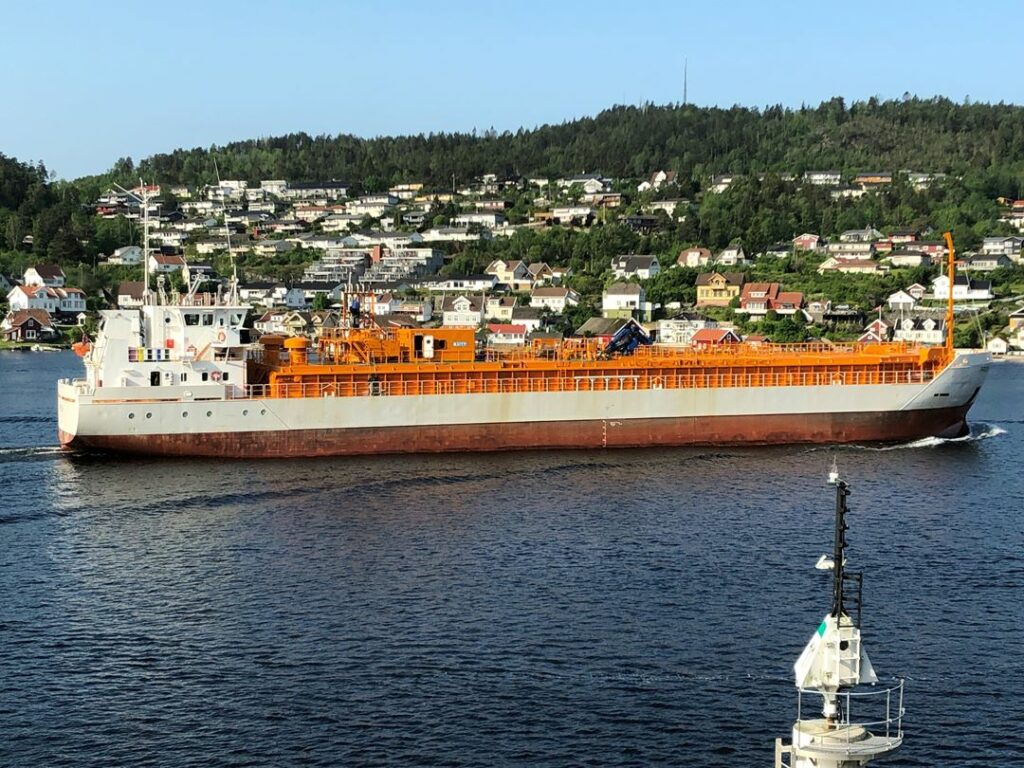
24.06.2024
CO₂LOS IV: Optimization of CO₂ Transport
CO2LOS IV aims to optimize the logistics of maritime CO2 transport and reduce costs. Major partners such as Equinor, TotalEnergies, and Gassco have been involved from the start, demonstrating significant interest in the project.
CO2LOS IV is a collaboration between the main partners Brevik Engineering AS and SINTEF AS, with a budget of 10.5 million NOK. CLIMIT contributes 37 percent of the funding. Brevik Engineering serves as the project owner and manager, working closely with SINTEF and other partners to execute the project.

Copyright: Brevik Engineering
Building on Previous Phases
The project builds on experiences and results from previous phases, CO2LOS II and III. These phases focused on developing various tools to reduce CO2 transport costs and exploring aspects such as liquefaction, interim storage, and terminals. CO2LOS IV utilizes this knowledge to test realistic scenarios in both Europe and Asia. The project examines CO2 transport between ports, and from inland areas to ports and then to storage sites.
– The CO2LOS projects began in 2018 as a collaboration between Brevik Engineering and SINTEF, with funding from CLIMIT. We enlisted major partners such as Equinor, TotalEnergies and Gassco. As the project progressed, interest grew, and significant players like Mitsubishi Heavy Industry, Mitsubishi Cooperation, BP, Mitsui OSK, IMODCO/ SBM and Exxon Mobil joined, says Ragnhild Skagestad of SINTEF AS, project manager for the CO2LOS projects.
CO2LOS Cost Tool
The “CO2LOSs Cost Tool” was developed to estimate costs across the entire logistics chain. Different scenarios can be run to see how changes in volume, pressure, or transport methods affect costs for each segment, whether by pipeline or ship. The tool was developed in collaboration with project partners and is owned by Brevik Engineering and SINTEF AS.

Environmental Impact and Public Acceptance
– We analyse emissions in each part of the transport chain and estimate the impact of our changes, such as on the ship’s propulsion system. We prioritize environmentally friendly solutions. Additionally, public acceptance is a challenge. Good communication and understanding from authorities and local communities are crucial, especially in projects involving transport through sensitive areas. Being open and transparent about plans and results is part of the solution, adds Ragnhild in SINTEF.
Technical Challenges
The core challenges of CO2LOS IV include optimizing the entire logistics chain for CO2 transport. This encompasses everything from liquefaction and compression to interim storage and terminals. The project has explored the possibility of directly injecting CO2 into offshore reservoirs, which, although challenging, could significantly reduce costs.
– Ship transport of CO2 is a very flexible solution, particularly considering advances in autonomy and low-emission ships. We believe this will be a vital part of future CO2 management solutions. Ship transport can be cost-effective and adaptable to various geographic and logistical needs, making this solution highly attractive, concludes Ragnhild Skagestad of SINTEF AS.
Key to Success
Ernst Petter Axelsen from Gassnova is CLIMIT’s representative in CO2LOS IV. He believes the strong collaboration between the different partners is the foundation for the project’s dynamic success. – This has enabled the project to share knowledge and experiences efficiently. It has also been crucial to balance research and practical engineering work, facilitating realistic and applicable solutions. This aligns with CLIMIT’s objectives and is a key criterion for our funding decisions, says Ernst Petter from Gassnova.
CO2LOS IV is scheduled for completion in mid-2025.
